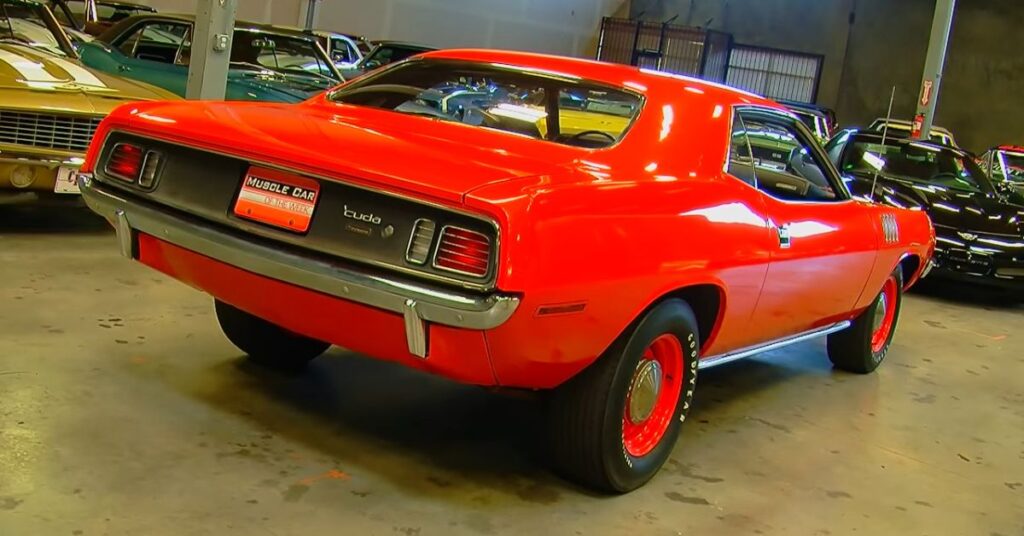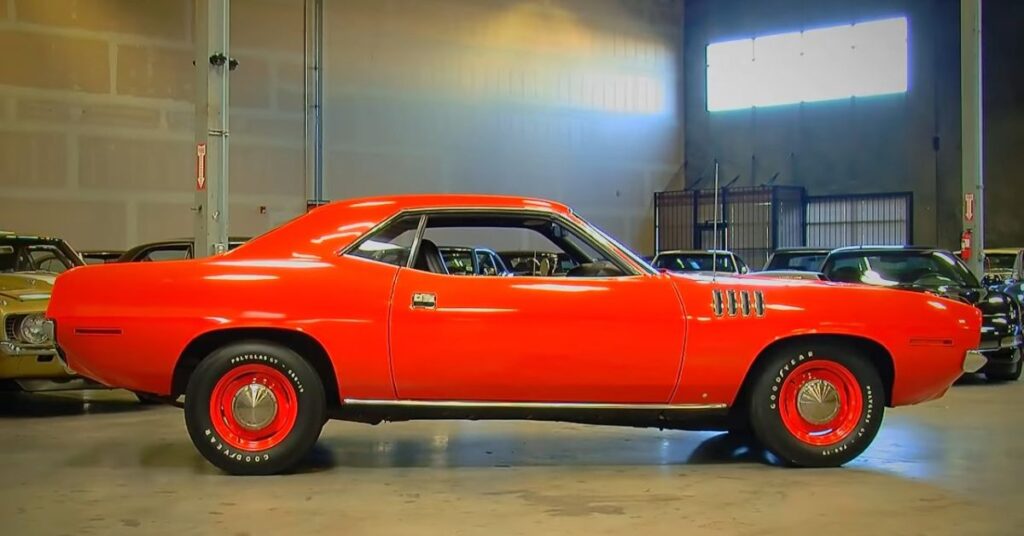In this week’s edition of Muscle Car of the Week, we delve into the captivating world of classic cars. Our focus is on the mesmerizing 1971 Hemi ‘Cuda, a true survivor that has stood the test of time. With its powerful engine, iconic design, and rich history, this car is a remarkable example of automotive excellence. Join us as we explore the allure of the 1971 Hemi ‘Cuda and discover why it continues to captivate car enthusiasts worldwide.
The Rarity of the 1971 Hemi ‘Cuda
The 1971 Hemi ‘Cuda is an automotive gem known for its scarcity. Out of the limited production of ‘Cudas in 1971, only a handful were equipped with the legendary 426 Hemi engine, TorqueFlite automatic transmission, and the nine and three-quarter inch Dana 60 rear axle. This combination makes this particular model extremely rare, with estimates suggesting that only around 49 were ever produced. The scarcity of this car adds to its desirability and makes it a true collector’s item.
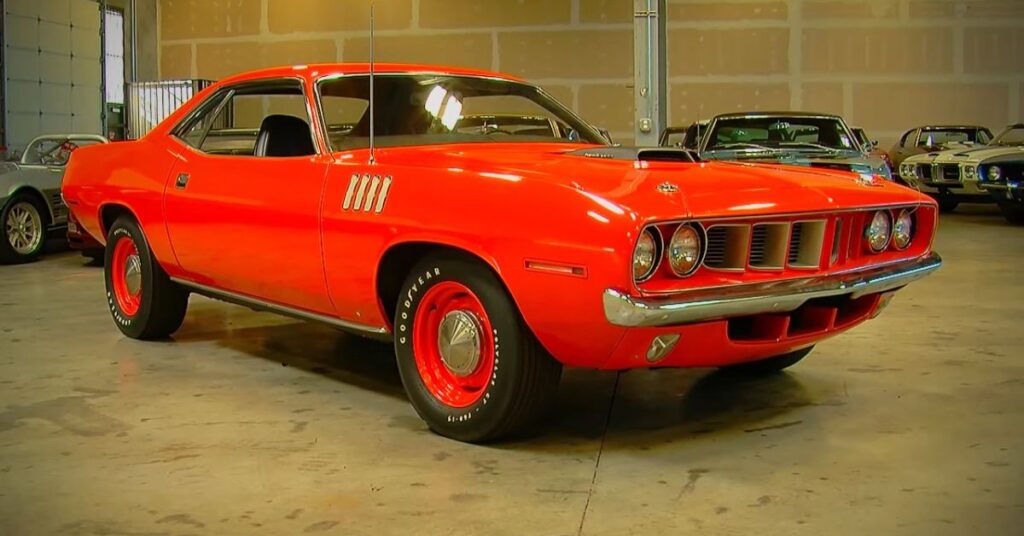
Unlike many classic cars that have undergone extensive restorations, the 1971 Hemi ‘Cuda we’re featuring today is a survivor. It has been driven and maintained over the years while retaining its originality. Although minor touch-ups, such as repainting the wheels, might have been performed, the overall appearance of the car remains true to its original state. The presence of some wear and tear, including paint chips and scratches, gives this car a unique character, showcasing its journey throughout the years.
Unmistakable Design: The 1971 ‘Cuda
The 1971 ‘Cuda received a subtle design update, featuring distinct characteristics that set it apart from its predecessors. Its grille resembles the gills of a fish, adding a touch of aggression to its front fascia. The fenders also incorporate stylish side gills, further accentuating its muscular appearance. What makes this particular ‘Cuda even more intriguing is its simplicity. Equipped with basic stamped steel wheels and dog dish hubcaps, it exudes a raw and unpretentious aura, reflecting its true muscle car essence.
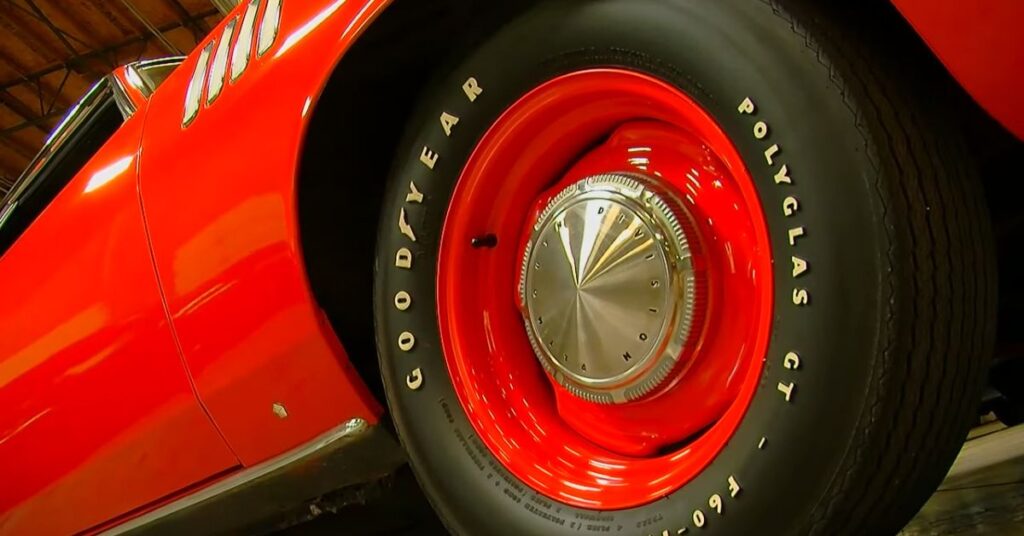
Under the Hood: The Mighty 426 Hemi V8 Engine
The heart and soul of the 1971 Hemi ‘Cuda lies under its hood: the mighty 426 Hemi V8 engine. This legendary powerplant is renowned for its sheer muscle and performance capabilities. With a displacement of 426 cubic inches, it roars to life with unrelenting power, delivering an exhilarating driving experience that is second to none. From the moment you hear the deep rumble of the engine, you know you’re in for an unforgettable ride.
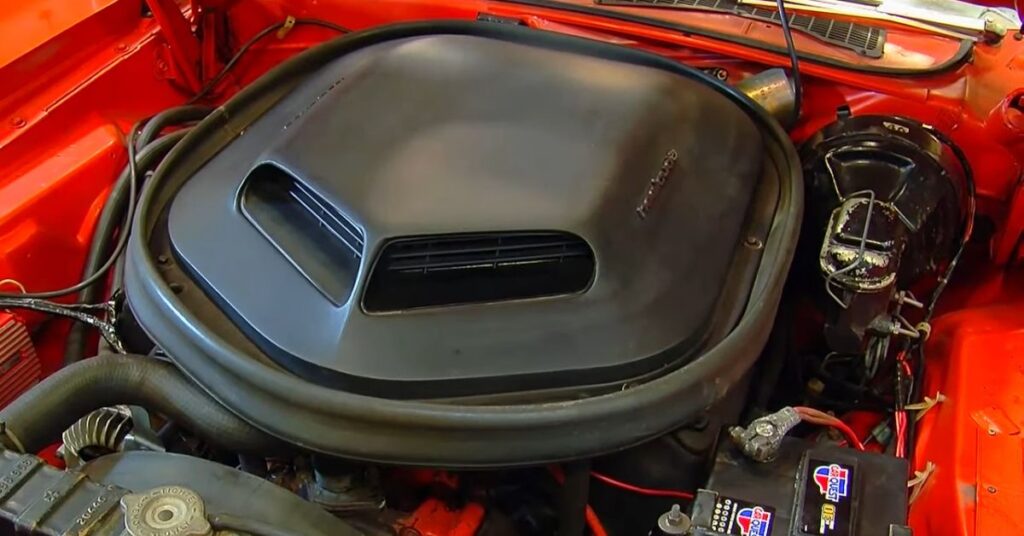
The 426 Hemi V8 engine is a true icon in the world of American muscle cars. Its high compression design, advanced hemispherical combustion chambers, and robust construction make it a force to be reckoned with. Generating an advertised 425 horsepower and 490 foot-pounds of torque, it dominated the streets and racetracks of its time. Even today, the 426 Hemi is revered for its raw power and relentless performance, solidifying its place in automotive history.
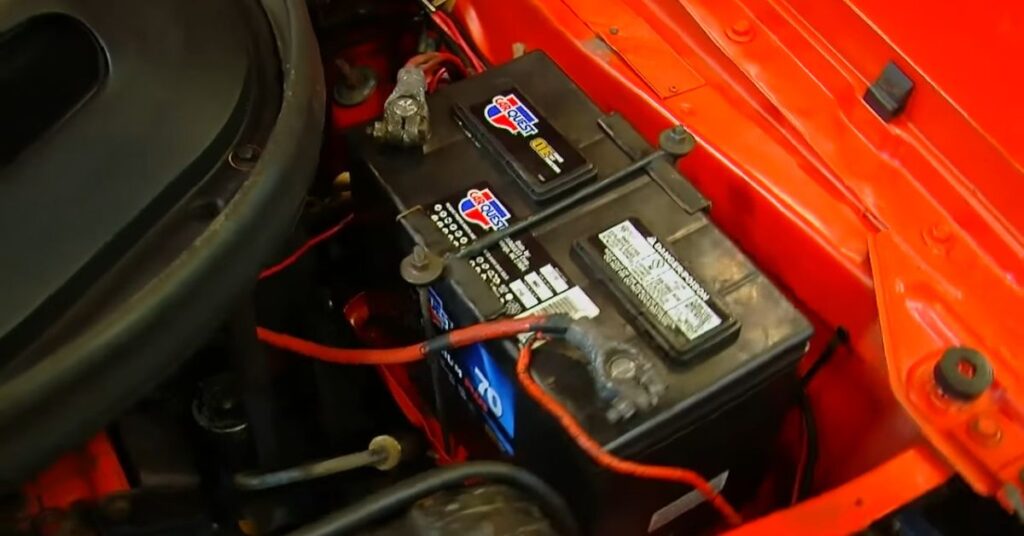
The 426 Hemi was a masterpiece of engineering, designed to extract every ounce of power from its massive displacement. With dual quads and high-flow cylinder heads, it breathed life into the ‘Cuda, propelling it to astonishing speeds. The engine’s high-performance internals, including forged pistons and a beefy crankshaft, ensured durability and reliability even under the most demanding conditions. The 426 Hemi’s engineering excellence and innovative design are a testament to the ingenuity of its creators, making it a true marvel of automotive engineering.

The year 1971 marked the end of an era for the 426 Hemi engine. As emissions regulations and changing market demands took their toll on other big-engine cars, Plymouth remained committed to the Hemi’s full-strength version. This decision makes the 1971 Hemi ‘Cuda even more special as it represents the culmination of the Hemi legacy. Owning a factory-installed, numbers-matching Hemi ‘Cuda is a testament to the exceptional craftsmanship and dedication to performance that defined this iconic muscle car era.
The Charm of Originality: A Piece of History
One captivating aspect of the 1971 Hemi ‘Cuda we’re showcasing is its originality. The car proudly retains unique details that bear witness to its journey through time. Notably, on the core support under the hood, there is a date written in a paint marker—the date of its pre-delivery inspection. While some may have chosen to remove this mark, it has been preserved, offering a fascinating glimpse into the car’s early days. The availability of supporting paperwork further validates its authenticity and provides a deeper connection to its historical significance.
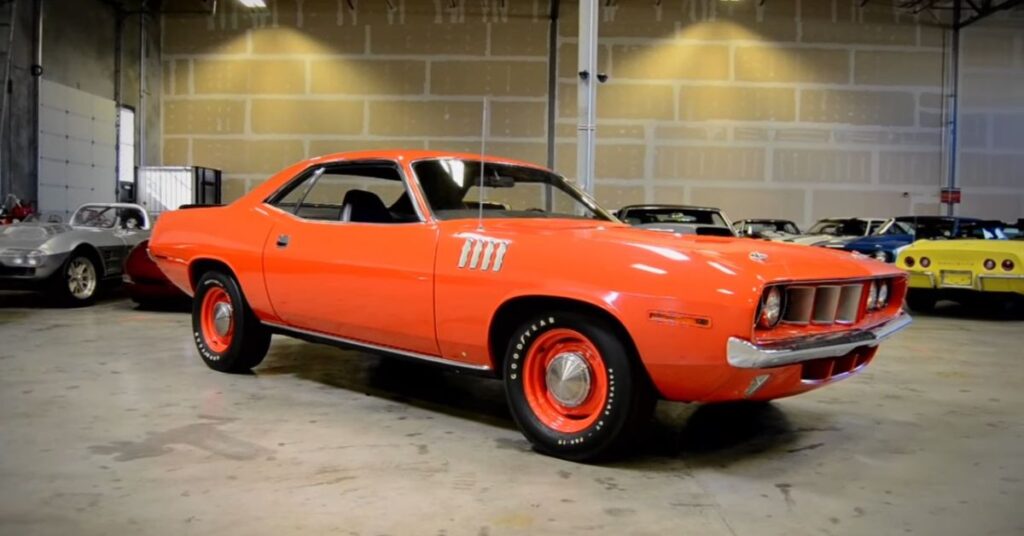
The Brothers Collection, known for its remarkable assortment of classic cars, boasts multiple Hemi ‘Cudas, including this all-original survivor. Their commitment to preserving automotive history ensures that these legendary vehicles can be appreciated by generations to come. The presence of original, unaltered cars like the 1971 Hemi ‘Cuda allows enthusiasts and car aficionados alike to witness a piece of history and experience the unfiltered allure of these extraordinary machines.
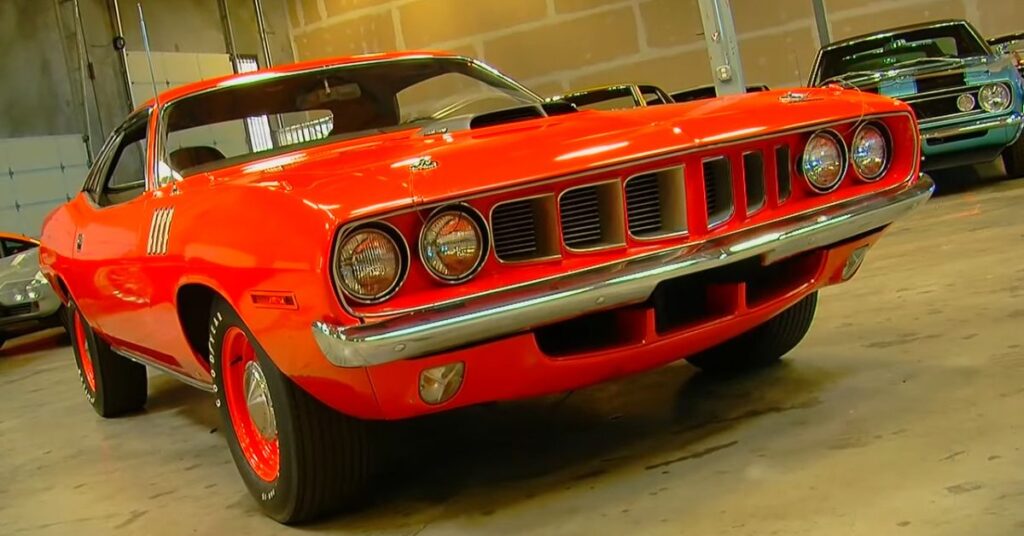
The Exterior
The 1971 Hemi ‘Cuda features a bold and aggressive stance that commands attention wherever it goes. With its muscular and sculpted body lines, it exudes a sense of power and performance. From the front, the iconic dual grille design and gill-like side vents give it a menacing appearance, hinting at the raw power that lies beneath the hood. The sleek and aerodynamic profile of the ‘Cuda adds to its visual appeal, enhancing its performance capabilities on the road.
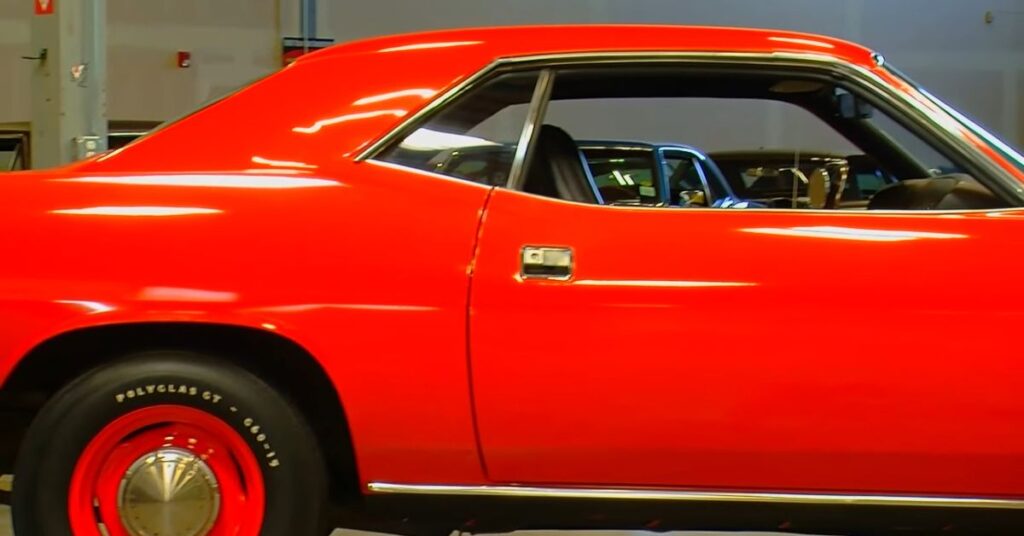
One of the striking features of the 1971 Hemi ‘Cuda is its vibrant Tour Red color. This unique hue, exclusive to the Plymouth brand, adds a touch of excitement and individuality to the car. The vibrant shade accentuates the car’s contours, highlighting its bold and timeless design. Combined with its iconic ‘Cuda badging and aggressive stance, the Tour Red color makes a powerful statement, ensuring that the ‘Cuda stands out from the crowd.
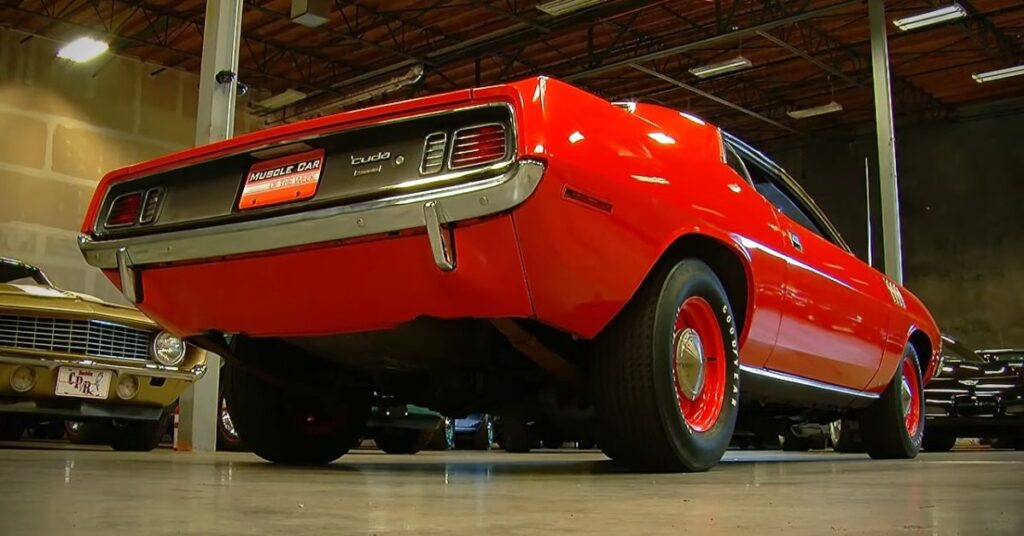
The 1971 Hemi ‘Cuda embraces its heritage with its classic styling cues. The stamped steel wheels with dog dish hubcaps, while basic in appearance, contribute to the car’s no-nonsense and performance-oriented character. They emphasize the ‘Cuda’s simplicity and showcase its focus on speed and power rather than luxury and excess. This back-to-basics approach is part of the charm of the ‘Cuda, appealing to enthusiasts who appreciate the essence of a true muscle car.
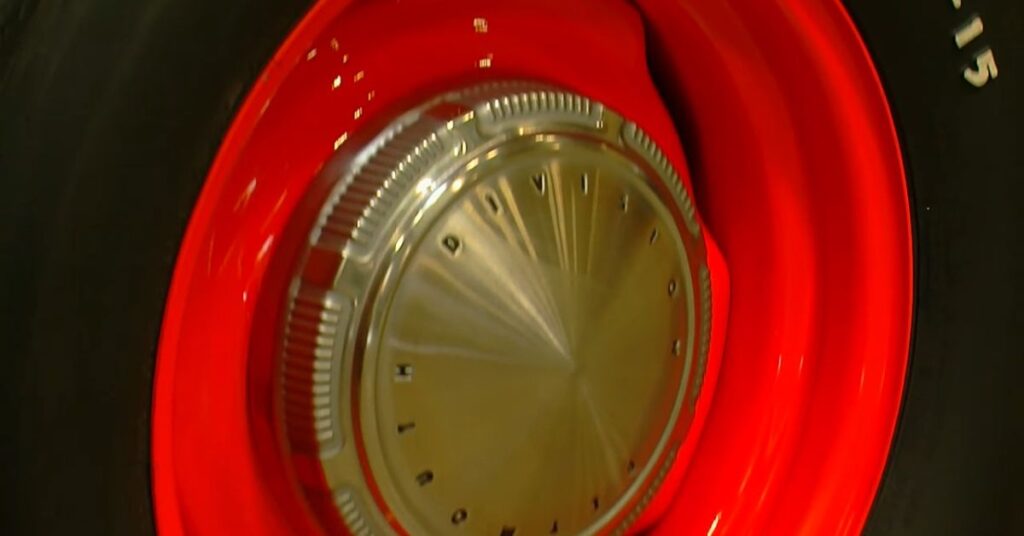
The attention to detail on the exterior of the 1971 Hemi ‘Cuda is evident in the subtle imperfections that come with being an original survivor. Areas where the paint is rubbed through, chips, and scratches tell a story of a car that has been driven and enjoyed over the years. These imperfections, combined with some dirt, evidence of grease, and minor wear, add character and authenticity to the ‘Cuda. They serve as reminders of its rich history and remind us of the enduring spirit of these classic muscle cars.
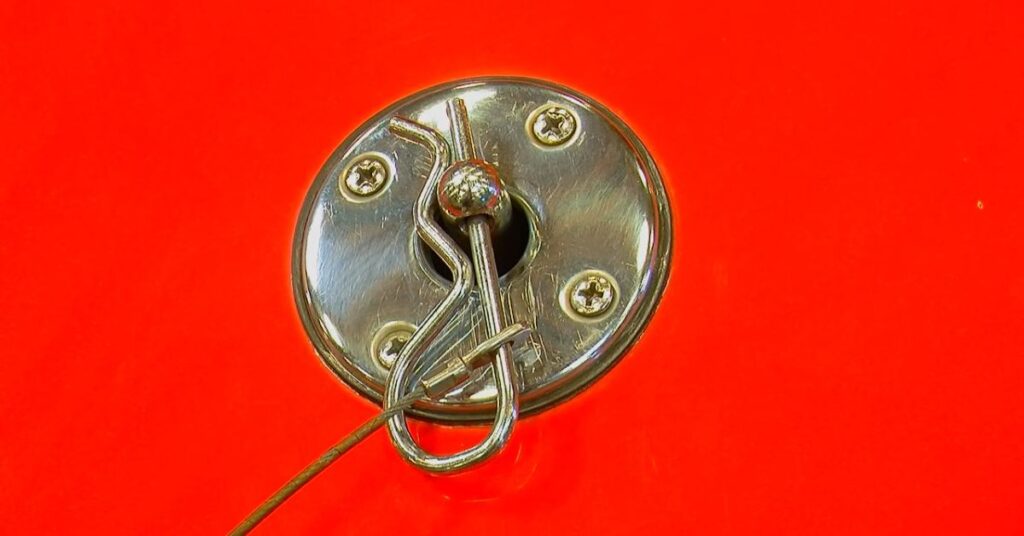
The exterior of the 1971 Hemi ‘Cuda is a testament to its timeless design and the era it represents. Its bold and aggressive stance, vibrant Tour Red color, classic styling cues, and subtle imperfections combine to create an unmistakable presence on the road. The ‘Cuda’s exterior exudes power, performance, and a rawness that captures the essence of the muscle car era.
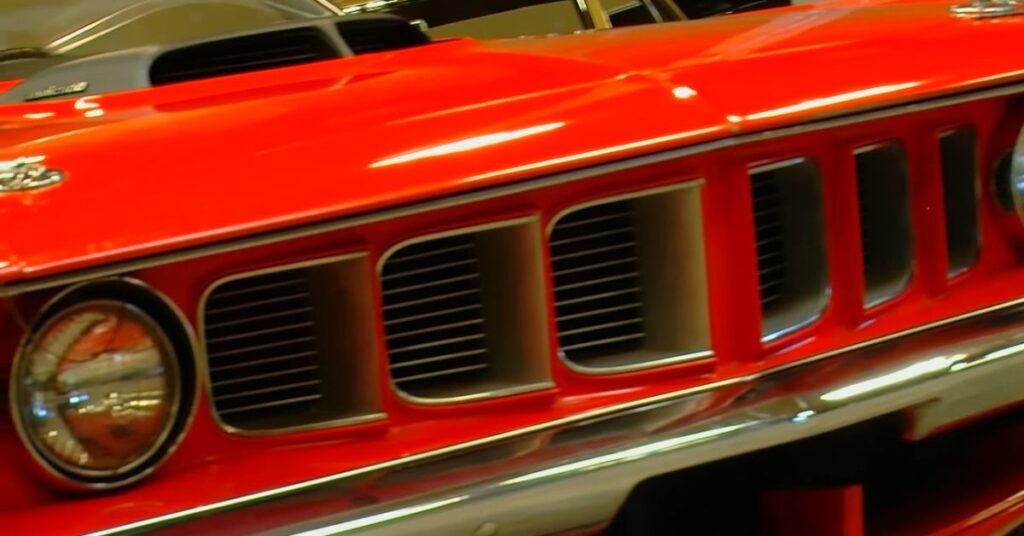
Conclusion
The 1971 Hemi ‘Cuda stands as a testament to the golden age of American muscle cars. Its rarity, originality, and unmatched power continue to captivate enthusiasts worldwide. As a survivor in a sea of restorations, it represents a piece of history—a tangible link to the past. The allure of this remarkable car, with its mesmerizing design and legendary 426 Hemi engine, remains as strong as ever. Discover more about the fascinating world of muscle cars by exploring the Muscle Car of the Week website, engaging on Facebook, and subscribing to the YouTube channel. Embrace the power, embrace the passion, and relish in the timeless appeal of the 1971 Hemi ‘Cuda.
